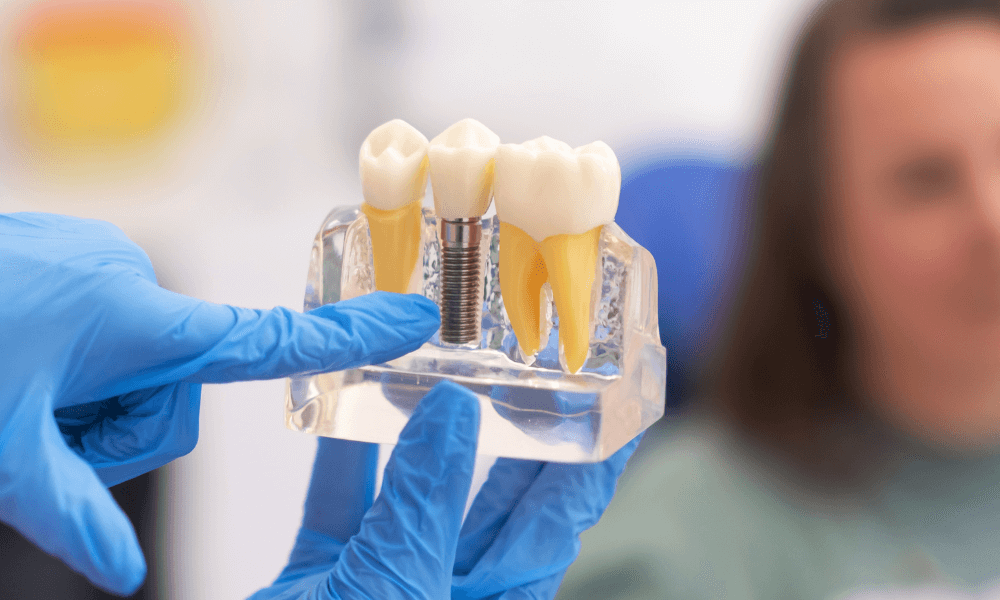Introduction
Dental implants serve as a contemporary remedy for the restoration of missing teeth, offering both functionality and aesthetic resemblance to natural teeth. This article aims to elucidate the complexities of dental implants, encompassing their anatomical structure, the pivotal process of osseointegration, the intricacies of surgical implantation, and the essential aspects of sustained, long-term care. Through this exploration, readers will gain a comprehensive understanding of the functioning and durability of dental implants, empowering them to make informed decisions regarding their dental health and treatment options.
Anatomy of a Dental Implant
The anatomy of a dental implant comprises three essential components, each playing a distinct role in its functionality and stability. Firstly, the implant fixture, typically crafted from titanium, serves as the artificial tooth root, anchoring securely into the jawbone. Secondly, the abutment connects the implant fixture to the dental crown, facilitating a seamless integration. Finally, the dental crown, customized to match natural teeth, sits atop the abutment, completing the implant and restoring both functionality and aesthetics to the smile. This intricate combination of components ensures the durability and natural appearance of dental implants, enhancing the quality of life for individuals with missing teeth.
The Process of Osseointegration
Osseointegration is a critical phase in the success of dental implants, involving the fusion of the implant fixture with the jawbone. This process is essential for establishing a strong foundation and stability for the artificial tooth. Over time, the titanium surface of the implant fixture stimulates bone growth, enabling it to integrate seamlessly with the surrounding jawbone tissue. Factors such as bone density, implant design, and patient health can influence the rate and success of osseointegration. This gradual bonding process ensures the longevity and functionality of the dental implant, mimicking the natural strength and stability of a tooth root.
Surgical Placement Procedure
The surgical placement of dental implants involves several steps. First, the patient undergoes a thorough examination, including X-rays and impressions, to assess the condition of the jawbone and surrounding tissues. The procedure is usually performed under local anesthesia, although sedation options may be available for anxious patients.
During the surgery, an incision is made in the gum tissue to expose the underlying jawbone. A hole is then drilled into the bone, and the implant fixture is carefully placed into the prepared site. The gum tissue is sutured back into place, and a temporary restoration may be placed over the implant during the healing period.
Maintenance and Long-Term Care
Proper maintenance and long-term care are essential for the success of dental implants. Patients must practice good oral hygiene, including brushing and flossing regularly, to prevent plaque buildup and gum disease. Routine dental visits are also important for monitoring the health of the implants and addressing any issues that may arise.
Dietary considerations can also impact the longevity of dental implants. Avoiding hard and sticky foods can help prevent damage to the implant and surrounding tissues. Smoking and excessive alcohol consumption should be avoided, as they can increase the risk of complications such as implant failure and infection.
Conclusion
In conclusion, delving into the intricacies of how dental implants work reveals a remarkable solution for replacing missing teeth. From the comprehensive anatomy, including the implant fixture, abutment, and dental crown, to the pivotal process of osseointegration, where the implant becomes integrated with the jawbone, every aspect contributes to the functionality and longevity of the restoration. Moreover, the surgical placement procedure and long-term maintenance regimen play crucial roles in ensuring the success of dental implants. By comprehensively understanding how dental implants work, individuals can make informed decisions about their dental health, ultimately enjoying restored confidence and functionality in their smiles for years to come.
If you’re considering dental implants and want to learn more about how they can restore your smile, contact Avery Dental Wellness. Our team in Dublin, OH, is dedicated to providing top-notch dental care and guiding you through every step of the implant process. Call us today to schedule a consultation and take the first step towards a healthier, more confident smile. Explore your options for Dental Implants in Dublin, OH, with Avery Dental Wellness, and experience the difference in personalized, compassionate care.

